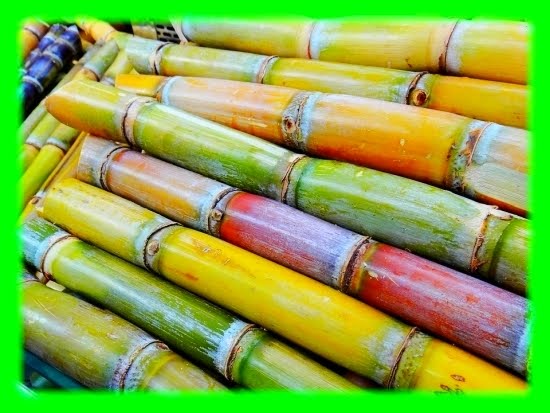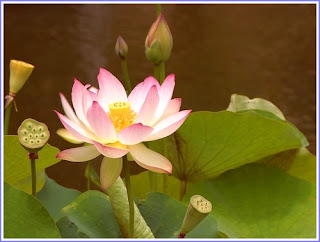Drink of gods - Soma - now within human reach
Ancient
Indo Aryans described a drink called Soma as a drink of immortal gods. The
Rig Veda, a sacred Sanskrit text of Indo-Aryans, has recorded many hymns in
praise of this drink. The Vedic Aryans regarded this plant as a divine godly plant.
Soma was available to ancient Rig Vedic humans. It prolonged life, enhanced ethical behavior, youth and vigor. It imparted
huge physical strength and beauty to humans. It also granted them spiritual
insights, increased intellectual ability, concentration and memory besides much capacity to love and increased happiness. It provided both wakefulness when needed and restful nights of sleep. The drink
was made from the juice of Soma plant.
There have been many attempts to discover what this
plant might have been ever since it was lost to humanity perhaps around a thousand years
before Christ. Whenever, humans think of a magical plant, their mind somehow
tends to go to intoxicating and hallucinatory plants. Therefore, it is not surprising that some of the suggestions of scholars have been plants like the
magic mushrooms that are hallucinatory. However, Soma was neither hallucinatory
nor intoxicating. Rather its affects were precisely the opposite of
intoxication. It made those who consumed this drink highly alert and focused with
great skill and accuracy to ancient warriors in use of weapons of their
time such as the bow and arrow.
Some years ago, this author began to
search for the identity of Soma plant with help of modern tools that
have become available only recently such as the Internet as well as his
scientific background combined with studies on spirituality.
Early Leads
Based on a study of the hymns on Rig Veda
and a search of plants around the planet this author initially deduced that
Soma might be the plant Cornus Sericea known commonly as dogwood or perhaps an
ancient variety of it that was more potent. However, further studies showed
that Soma couldn’t be dogwood. The Soma plant yielded a sweet frothy juice in
abundance on crushing in stone presses that dogwood does not. It was not long
before this author realized that the plant being described in Rig Veda was much
like Sugar cane. It has tall stalks, grows knot by knot, joint by joint and
when it blooms looks like a spear. It requires
crushing in heavy presses to yield its juice. And its bundles are heavy
requiring groups of men and women to carry just as Soma stalks were carried in
Rig Vedic times. What is most significant is that it grows in colors described
– green, yellow, golden, tawny, red and brown.
 |
| Sugarcane in colors of Soma, green, yellow, golden, tawny and red |
However there was one serious shortcoming,
although sugar cane juice is healthy, it does not have the same magical
properties as described for Soma. Nevertheless, it must be noted that there are
several varieties of the sugarcane plant each with some differences
in organic chemical composition and it was not impossible that a variety
existed in ancient times that had the potent qualities as mentioned for Soma.
The interested reader may refer to the
following note by the author for details.
The next phase of the search was to look
for organic compounds that are found naturally in plants, particularly C4
grasses of which sugarcane is one, that might have the same sort of effect as
described for Soma, effects that were energizing and happiness generating but not intoxicating. The hope was that if such chemicals could be found it would
ease search for the right variety of sugarcane or help in its recreation
with help of modern plant breeding.
Active Soma like compounds
A search of organic compounds that have
Soma like effects and occur naturally in the grass family led this author to
two compounds. 2-Phenylethylamine known commonly as PEA and available in salt
form as PEA HCL in online stores as also another called Hordenine in smaller quantities
(about ten percent). Apparently both chemicals have to be consumed together in
that proportion for best effect. These compounds are not intoxicating or
hallucinatory just like Soma and have effects similar to those described for
Soma. They are available in Amazon stores and an interested reader may refer to
reviews by hundreds of users of PEA on Amazon for an idea of the effects of PEA
aside from scientific articles on this substance.
It must be mentioned that although
presently unscheduled and available without prescription, PEA is a potent
chemical compound and can have adverse effects. The reader must not rush to it
without appropriate medical advice and ascertaining the correct dosage.
Further, caution is required not to
confuse PEA i.e. 2-phenylethylamine with a general class of compounds that are
chemically substituted phenylethylamines often known simply as just
phenylethylamines. These latter compounds are dangerous substances. Many are
illegal. Some are also hallucinatory and have serious adverse consequences.
As regards PEA as also Hordenine, although
they are presently legal and unscheduled one must note that they are pure
chemicals and their use can likely be harmful as is the case with many isolated
compounds from plants or created in a lab as opposed to chemicals that are a
part of food. Whenever a plant produces an active chemical, it is not in
isolation but a number of companion chemical compounds are produced in the
plant during the process. The consumption of all of these together, as happens
with organic foods makes a plant whole and more suited to life. It is a part of
the natural processes of life. There is a full note in this blog discussing the
differences and the interested reader may read the following note about it,
As said at the outset, the search of Soma
like chemicals by the author is not to encourage or promote the use of chemical
compounds but rather for a variety of sugarcane that contains these compounds
as active compounds.
Revival of Soma
Although both PEA and Hordenine is found
in C4 grasses it does not occur in modern varieties of sugarcane in required
quantities to be similar to ancient Soma. However, the sugarcane grasses are
eminently suitable for breeding or genetic engineering so as to increase their
content of these chemicals as described in the following note to revive the
Soma variety of sugarcane. The interested reader may read the following
document by Brumbley (2002) and others for a greater description of this
process,
A substitute Soma Drink,
While the recreation of Soma as described seems feasible, it shall take time. Plant breeding is a time consuming process. In
the meantime there is a substitute drink that could be researched by those working on effects of PEA, which although not as
effective as natural Soma because of its chemical nature may have lesser possibility of harm than consumption of PEA alone. One possible recipe is given here for researchers to explore,
Add 250mg of PEA HCL and 25mg Hordenine
HCL to a glass of fresh filtered sugar cane juice. Rest in a wooden vessel for
a further four hours for sediments to settle down. Then mix in a glass of full
cream milk. Divide in three portions, refrigerate, and consume a portion at a time during three different times of the day.
When sugarcane juice is not available
another substitute, albeit likely less effective to use in its place, is
diluted sorghum syrup. Sorghum like sugarcane in also a C4 grass and contains
compatible compounds, and it seems worth investigating its use as a replacement.
Selective Effect
The thrust of this blog has been on spiritual
development for attaining the sort of benefits that Soma provides. Yet, we are
what we eat, at least temporarily. Patanjali the father of yoga has mentioned that herbs can lead to temporary
yogic benefits. However, the amazing thing about Soma and its
presumed active ingredient 2-Phenylethylamine is that it seems to do both. As
statements of ancients declare as also the experience of modern users as may be
gleaned from reviews on Amazon, it does not affect all similarly. It provides
huge benefits to many, none to some and even makes a few
sick. Ancient Indo-Aryan seers concluded that while it enhances
ethical behavior, one has to be an ethical person in the first place to benefit
from it. In the words of Rig Veda,
“To him who keeps the law,
both old and young, thou give happiness and energy that he may live.”
It seems further that the more ethical a person is, the greater the benefit of Soma. It seems it shall impart little or no benefit to others. There is a need for further studies and research on the present topic in view of potential improvements in human lives.






Comments